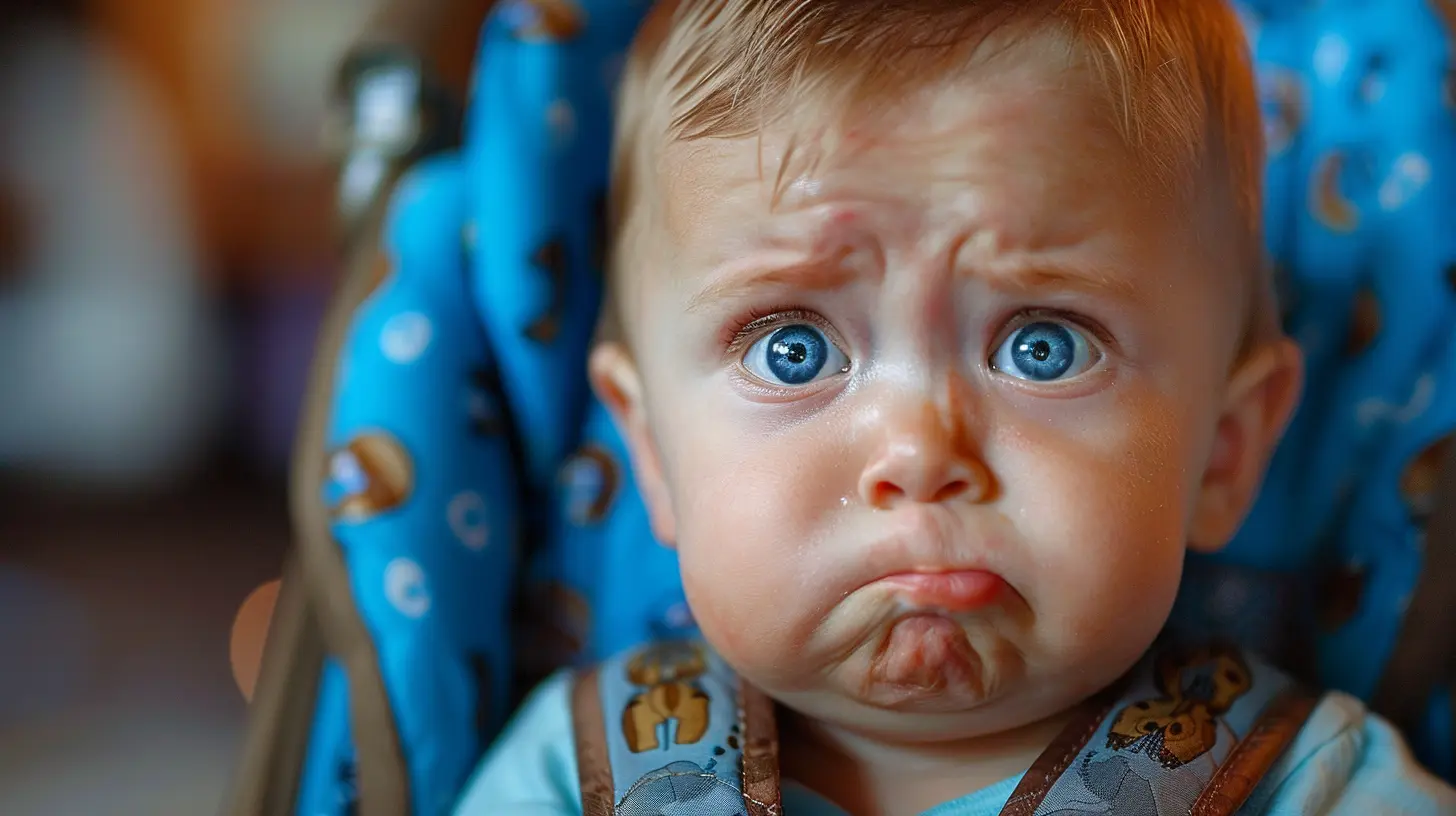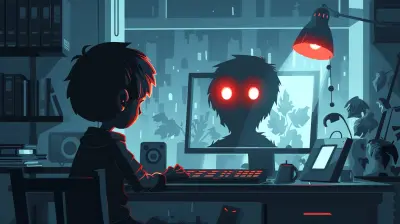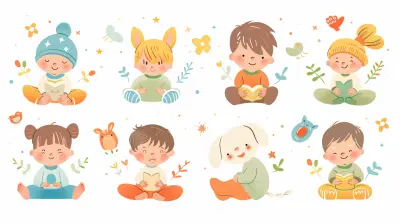How to Encourage Your Baby's First Words
21 November 2025
There's nothing quite as heartwarming as hearing your baby say their first word. That tiny voice calling out "mama," "dada," or even their version of "doggy" makes all those sleepless nights and diaper blowouts seem worth it, right?
But when do those magical words come? And more importantly, how can you help your little one find their voice?
Let’s talk all about encouraging those adorable first words in a fun, simple, and loving way. The best part? You don’t need any fancy tools or apps—just your time, attention, and a whole lot of love.
Why Are First Words Such a Big Deal?
First words are more than just cute babble. They’re a major milestone in your baby’s communication journey. Around 9 to 14 months of age, most babies start transitioning from coos and babbles to actual recognizable words. It’s their way of connecting with the world and expressing themselves.Just imagine learning a whole new language from scratch. That’s what your baby’s doing! They’re piecing together sounds and meanings, slowly building up the courage to say them out loud.
So yes, every “mama,” “ball,” or “uh-oh” is a massive win. Let’s make sure we’re cheering them on every step of the way.
When Do Babies Start Talking?
Timing varies, so don’t panic if your baby isn't chatting away by their first birthday.Generally:
- By 6 months: Babies start to babble ("ba-ba", "da-da").
- By 9 months: They might start using tone – asking questions with a rising pitch or babbling excitedly.
- By 12 months: Some babies will say their first real words.
Every baby’s timeline is unique. Some are chatterboxes early on, while others take their time and suddenly launch into full sentences.
The key? Keep talking, keep listening, keep loving.
Tips to Encourage Your Baby’s First Words
Ready to be your baby’s personal language coach? Here’s how to make it fun and effective.1. Talk, Talk, and Talk Some More
Think of yourself as a narrator in your baby’s life. Explain what you're doing, seeing, or feeling.Example: “We’re putting on your socks. Now the left foot! Snug as a bug!”
Even if they don’t answer, they’re soaking it all in like little sponges.
2. Keep It Simple and Repetitive
Babies love repetition. It's how they learn.Say short words like “ball,” “mama,” “milk,” or “bye-bye” clearly and often.
Use them in context:
- “Here’s your ball!”
- “Mama is coming!”
- “Do you want more milk?”
Over time, those familiar sounds start clicking.
3. Read Together Every Day
Books are baby brain food. Even if they don’t understand the story, listening to your voice helps them learn rhythm, tone, and new words.Choose books with:
- Bright pictures
- Simple, rhyming words
- Interactive elements (flaps, touch-and-feel, etc.)
Make it fun—use silly voices, point at pictures, and name everything.
4. Sing Songs and Nursery Rhymes
Music lights up baby brains in magical ways. Classic nursery rhymes (“Twinkle Twinkle,” “Old MacDonald,” etc.) combine rhythm and repetition—perfect for language development.Don’t worry about pitch. Your baby doesn’t care if you sound like Beyoncé or a squeaky door—they just love hearing you.
5. Use Everyday Moments as Learning Opportunities
Bath time, meal time, changing diapers—these are all chances to talk.Say things like:
- “Here comes the soap!”
- “Yummy banana. Banana is yellow.”
- “All clean! Let’s put on your pajamas.”
Every moment is a mini lesson in communication.
6. Repeat and Expand
When your baby makes a sound, mirror it back and add to it.Baby says: “Ba!”
You say: “Ba! Yes! That’s your ball!”
It shows them you’re listening and builds a bridge from babble to real words.
7. Make Eye Contact and Use Expressive Faces
Babies learn by watching your face. So get close, smile, and exaggerate the way your mouth moves.It’s like teaching them how to form the words visually—and babies are excellent little lip-readers when they’re learning to talk.
8. Respond to Their Sounds
It might just be a squeal or a gurgle, but it’s your baby’s way of talking.So respond with enthusiasm. Say, “Oh wow! Really?” or “I hear you!”
You’re teaching them that communication is a two-way street.
9. Avoid Too Much Screen Time
Yes, we all need a break now and then (hello, baby shark on repeat), but studies show that too much passive screen time can delay language development in babies.Screens can’t replace your voice, your expressions, your warmth. Real-life interaction is simply unbeatable.
10. Celebrate Every Effort
Clap, cheer, and smile at every little attempt your baby makes to talk. Your encouragement is powerful.They’ll learn that language isn’t just useful, it’s fun.
What If Your Baby Isn’t Talking Yet?
It’s important to remember that babies develop at their own pace. Some talk early, some later. But if your baby isn’t saying any clear words by 15-18 months, it might be time to check in with a pediatrician or a speech-language therapist.Look out for:
- No babbling by 9 months
- No gestures (like pointing or waving) by 12 months
- No words by 15-18 months
Early support can make a big difference. And remember, asking for help doesn’t mean you’ve done anything wrong.
How To Encourage Speech In Multilingual Homes
Raising a bilingual (or even trilingual!) baby? Amazing! Yes, they might take a little longer to start talking, but they'll catch up—and then some.Here’s how to help:
- Be consistent with who speaks which language.
- Use clear and simple words in both languages.
- Avoid mixing languages in the same sentence (at least in the early stages).
- Read books and sing songs in multiple languages.
Multilingual kids are little language ninjas—it’s totally worth the extra patience.
Speech-Boosting Activities to Try at Home
Need ideas that don’t involve more toys or gadgets? Try these:Play “Name That Object”
Hold an object (like a spoon, toy, or shoe), say its name slowly, and let your baby touch or look at it.Mirror Game
Sit together in front of a mirror and make silly sounds and faces. Babies love mimicking—and it boosts awareness of how mouths move to make words.Peekaboo With Words
Instead of just saying “peekaboo,” say:- “Where is mama?”
- “There she is!”
It turns a game into a language lesson without them even noticing.
Sound Walk
Take a walk and point out sounds: “Hear the dog? Woof woof!” “Do you hear the car? Vroom!”Connecting sounds to words helps build vocabulary naturally.
Final Thoughts: Patience, Presence, and Plenty of Praise
Encouraging your baby’s first words isn’t about pushing flashcards or drilling vocabulary. It’s about being present—talking, listening, playing, loving.Babies talk when they feel safe, supported, and heard.
So trust your instincts. Keep the lines of communication open, even if they’re just filled with babble and giggles right now.
One day, in the not-too-distant future, you’ll look back and miss these sweet, pre-word days. But for now, go ahead—sing, read, talk, play… and let the magic of those first words unfold.
all images in this post were generated using AI tools
Category:
Infant DevelopmentAuthor:

Austin Wilcox

